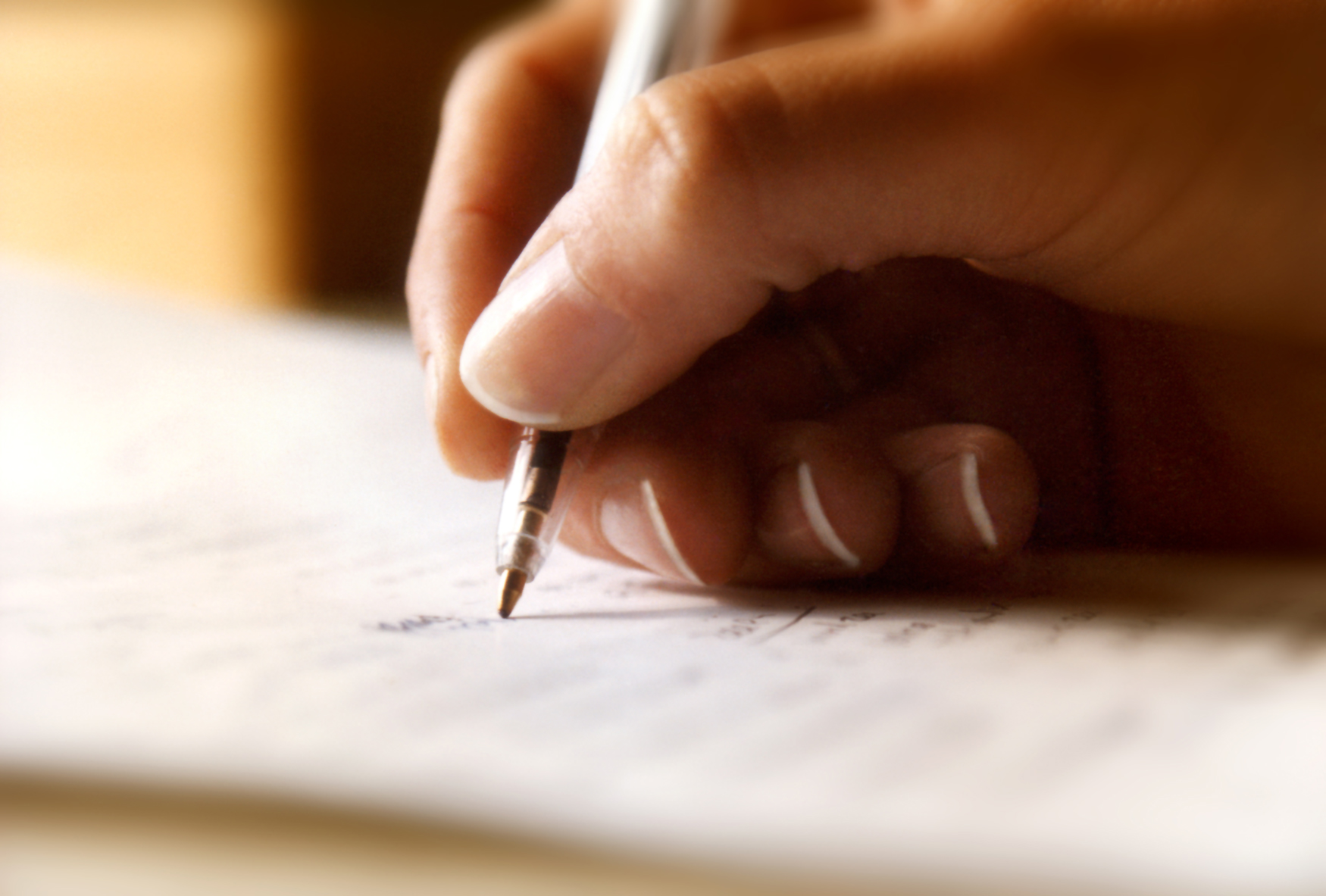One of my nieces was once so pleased with herself for learning to write her name that she found a rock that fit nicely into her kindergarten-sized hand and scratched out all five letters. Onto the side of my sister’s new van. She even neatly scribbled out one of the letters and corrected it.
After the hell fire and brimstone rained down, she wrote it repeatedly on more appropriate surfaces. Writing, it seemed, was a delightful new skill.
Holding my son’s hand the other day, I realized he was missing something: a writer’s callus. Incredulous, I quizzed his sister and some friends of hers.
“A writer’s what?” they wanted to know.
“You know,” I explained, showing them my right hand, “that bump on the side of your finger where the pen rests. It’s that raised rough spot you get from writing. Like, from taking notes and writing essays.”
The smooth-fingered youths had no idea what I was talking about. My oldest was in third grade a decade ago. That is typically the grade where children are taught cursive writing. That year, they grudgingly made it through about half the alphabet before moving on to another topic. The year after that, the school stopped teaching handwriting altogether. Ask my younger child to sign his name and it’s different each time, a flat squiggled imitation of what he’s observed from his father and me. They write all their work on their laptops and email it in to the teachers. Taking notes in class is sometimes a simple matter of taking a picture of the board with their phones.
I remember spending hours–hours–practicing handwriting on page after page of paper  that looked like miniature roads running from left to right, a dotted center line between two solid lines, the guide for how high each lower-case letter should reach. We were graded on penmanship, required to write our letters to Santa this way, and the requisite post-Christmas thank you notes to far away aunts and uncles. By the time I reached middle school, I could chat with my latest crush and execute countless finely doodled “Mrs. Stephen Bishops**” on the pad by the telephone, wrapped in its spiraled cord. (**Names have been changed to protect said no-good, cheating twerp and my less than stellar character judgement.)
that looked like miniature roads running from left to right, a dotted center line between two solid lines, the guide for how high each lower-case letter should reach. We were graded on penmanship, required to write our letters to Santa this way, and the requisite post-Christmas thank you notes to far away aunts and uncles. By the time I reached middle school, I could chat with my latest crush and execute countless finely doodled “Mrs. Stephen Bishops**” on the pad by the telephone, wrapped in its spiraled cord. (**Names have been changed to protect said no-good, cheating twerp and my less than stellar character judgement.)
When my family moved just before high school, I spent mopey, sulky days writing long letters back “home” to my friends, pages of thoughts, drawings, and stories that grew so bulky the envelopes required reinforcing tape and lots of extra postage. I filled journals, amusing to pull out and read now, my teenage angst leaping from each page, but instructive, now that I am raising teenagers, in remembering what it was like, inhabiting that lonesome territory.
In high school and college, my note-taking was fast and furious, letters small and sure. Small handwriting is supposedly a sign of introversion and an ability to concentrate, in my case probably accurate. Once, for a chemistry test, a teacher cleverly allowed us to bring a “cheat sheet” to class, with a catch: it could only be one inch square. While I am not so focused as to fit entire book chapters on rice grains, like artist Trong G. Nguyen, I managed to fit every chemistry formula I needed on that tiny square. I wrote countless papers and my master’s thesis by hand, typing and retyping it in final draft on an electric typewriter, halfway high on White-Out correction fluid. For graduation gifts, I received several Cross pens, some engraved, which the givers I’m sure imagined would be useful for decades.
I had a meeting the other day with a fellow writer, a guy in his mid-thirties. Curious, I asked if he had a writer’s callus. “No,” he shrugged. “I never even carry a pen.” He quickly transitioned from laptop to ipad to smartphone, typing notes, reading emails, and sending texts. Yesterday’s writer’s callus has morphed into alarming maladies of today: something called “text claw” and thumb arthritis.
Obviously, I have upgraded from my old electric typewriter to a computer. I have a smartphone and I know that an emoji is not a Japanese manga character. Although my teenage son frequently can not believe that I don’t use Siri and the fine points of Apple navigation are lost on me, at least I’m ahead of my father, whose idea of a text message is to send me an email with just the subject line.
Perhaps we have lost something in the rush of progress. I love looking at my husband’s grandfather’s Bible, with his shaky notes written in the margins. I treasure my mother’s handwritten recipes so much that I have one framed on my kitchen counter. At some point, she thought to organize everything and threw most of them away in favor of typed-out note cards. This is why I just cannot, will not, refuse to get on board with the Nooks and Kindles and handheld Bible Apps. Traitorous devices! Electronic highlighting and note taking is not the same as pulling a book from the shelf and happening upon a marginal note I’d written long ago, the handwriting and thinking a reflection of whatever age I was at the time.
A couple of my friends occasionally take the time to write notes. With a pen. On real stationery. It says something more than an email or text. Taking an extra minute to collect a thought or two, commit them to paper, and drop them in an actual mailbox may be a relic from the past, but what a joy to receive it amid the impersonal bills, catalogs, and the usual computer-generated fare. Maybe it’s another one of those genteel Southern graces like handkerchiefs or making a medicinal hot toddy.
I’m afraid someday my grandkids will be texting at Christmas time: Sup, Snta. How ru? Im gud. Pls bring prsnts!
I shudder to think. Until then, I just know I’m mourning the writer’s callus.









I never noticed before, but I think mine is gone too. Now I’m mourning the writer’s callus!